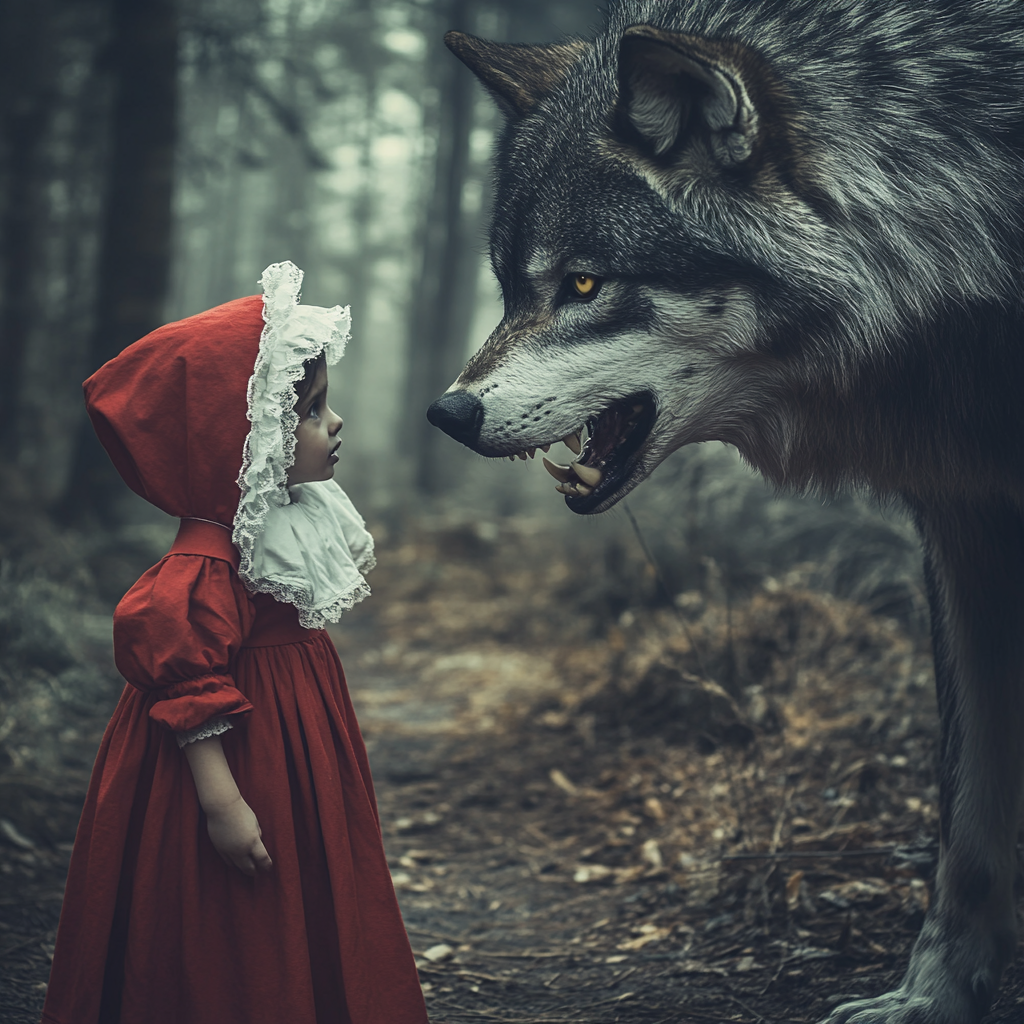
Introduction: Not So Happily Ever After
When we think of fairytales, images of magic, true love, and happy endings often come to mind. Yet, behind the sanitized versions of Disney movies and bedtime stories lies a far darker world filled with horror, revenge, and tragedy. The original versions of many beloved fairytales are worlds away from the cheerful narratives we know today. These unsettling origins have been hidden from most of us, leaving behind stories that, when stripped down to their roots, are more nightmare than fairy tale.
Brace yourself as we venture into the eerie and sometimes downright disturbing history of the world’s most popular fairytales.
- Cinderella – Feet of Blood and Betrayal
The tale of Cinderella has been passed down through generations as a heartwarming story of a young girl, mistreated by her stepfamily, who rises to royalty with the help of a magical godmother. However, the Grimm Brothers’ original version of Cinderella, first published in 1812, reveals a tale laced with brutal consequences and family betrayal.
In the Grimms’ story, Cinderella’s stepsisters go to horrific lengths to fit into the glass slipper. One sister cuts off her toes, and the other slices her heel, with blood dripping from their shoes as they try to deceive the prince. But the story doesn’t stop there; during Cinderella’s wedding, birds peck out the eyes of her wicked stepsisters as punishment, leaving them blind.
This story of revenge and punishment paints a darker, bloodier picture than the happy ending we know today.
- Sleeping Beauty – A Tale of Assault and Awakening
The story of Sleeping Beauty, immortalized by Disney’s 1959 film, is known for its iconic scene of true love’s kiss waking a princess from an enchanted sleep. But in the original tale, penned by Giambattista Basile in the 17th century, there is no prince and certainly no act of love.
In Basile’s version, titled Sun, Moon, and Talia, the princess Talia falls into a deep sleep after pricking her finger on a spindle. But instead of being woken by a kiss, she is discovered by a king who, finding her asleep, assaults her. She later awakens not to find true love but to discover that she has given birth to twins. It’s only after this shocking discovery that she and the king end up together, though the story’s disturbing details have since been omitted in later retellings.
This haunting origin is far from the charming fairy tale that most audiences have come to love.
- Hansel and Gretel – Starvation and Cannibalism in the Forest
On the surface, Hansel and Gretel tells of two siblings who outwit a wicked witch intent on eating them. But the origins of this story are rooted in a historical time of desperation and fear. Scholars believe that Hansel and Gretel was inspired by a grim period in the Middle Ages known as the Great Famine, where starvation was so widespread that tales of cannibalism began to emerge.
The original Hansel and Gretel story wasn’t just a charming tale of sibling bravery but a grim reflection of a society faced with survival at any cost. Parents abandoned children to save resources, and there are accounts of families who resorted to horrific measures to avoid starvation. The cannibalistic witch, then, represents the darkest fears of society at the time – the terrifying extremes people might go to in the face of starvation.
- Little Red Riding Hood – A Grisly Lesson in Survival
Little Red Riding Hood has been used for centuries as a cautionary tale about trusting strangers. But the original versions were far more explicit about the dangers young girls faced. In Charles Perrault’s 1697 version, there’s no heroic woodsman to save the day. Instead, the story ends with the wolf devouring both Little Red and her grandmother, symbolizing the perils that await those who wander from the path.
Other versions are even more disturbing, with some involving implied themes of violence or even cannibalism. The wolf convinces Little Red to consume parts of her own grandmother, or in some versions, he is a symbol of predatory men. This dark tale of survival serves as a brutal, cautionary warning about straying from safety and venturing into the unknown.
- Snow White – A Mother’s Deadly Jealousy
While Disney’s Snow White and the Seven Dwarfs tells the story of a wicked queen, in the earliest versions, Snow White’s tormentor wasn’t a stepmother but her own mother. In these darker retellings, jealousy drives Snow White’s mother to demand her daughter’s death. She goes so far as to ask for her child’s lungs and liver, which she then plans to eat as proof that Snow White is gone.
In the Grimm Brothers’ version, the queen tries to kill Snow White with a poisoned comb and a strangling lace before finally using the poisoned apple. In the end, Snow White’s punishment is just as disturbing: the queen is forced to dance in red-hot iron shoes until she falls dead, adding yet another layer of grim justice to the tale.
- The Little Mermaid – A Story of Self-Sacrifice and Suffering
In Hans Christian Andersen’s version of The Little Mermaid, the mermaid doesn’t get a happily-ever-after. Instead, her journey is marked by excruciating pain and unrequited love. In the original story, the mermaid trades her voice for legs, but every step she takes feels like walking on sharp knives. Despite her sacrifices, the prince marries another, leaving the mermaid heartbroken.
In the end, she is faced with a choice: kill the prince to save her own life or dissolve into sea foam. True to her kind heart, she chooses to spare him and dies, her soul transformed into a “daughter of the air,” left to wander rather than find the love she yearned for. Andersen’s version is more about self-sacrifice and loss than the fairy tale ending Disney popularized.
Conclusion: The Real Monsters Behind the Magic
As these tales reveal, the origins of fairytales aren’t about magical kingdoms or true love—they’re often harsh lessons wrapped in symbolism and dark morality. They speak to universal fears, struggles, and human nature’s complexities. Originally crafted to impart lessons or cautionary warnings, these stories were intended for adults just as much as for children, with messages of revenge, caution, and survival.
Today, we may view these sanitized stories as light entertainment, but their history holds a mirror to a past where humanity’s darker nature was laid bare through folklore. So the next time you read a fairytale, remember that the real story might be lurking in the shadows, waiting to show its true face.








Chỉ sau thời gian ngắn ra mắt, framelessglassnorthernbeaches.com đã nhanh chóng khẳng định vị thế tại thị trường quốc tế với sự hiện diện tại hơn 20 quốc gia, nổi bật tại châu Á như Việt Nam, Thái Lan, Nhật Bản và đang mở rộng sang châu Âu.
Chỉ sau thời gian ngắn ra mắt, framelessglassnorthernbeaches.com đã nhanh chóng khẳng định vị thế tại thị trường quốc tế với sự hiện diện tại hơn 20 quốc gia, nổi bật tại châu Á như Việt Nam, Thái Lan, Nhật Bản và đang mở rộng sang châu Âu.
Chỉ sau thời gian ngắn ra mắt, framelessglassnorthernbeaches.com đã nhanh chóng khẳng định vị thế tại thị trường quốc tế với sự hiện diện tại hơn 20 quốc gia, nổi bật tại châu Á như Việt Nam, Thái Lan, Nhật Bản và đang mở rộng sang châu Âu.